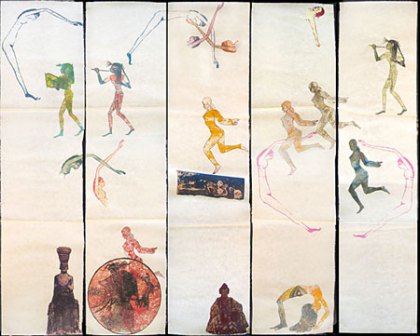The Spirit of the Beehive (El espíritu de la colmena), 1973 (Trailer)
(…)
Indagación lírica en las entrañas de un tiempo amordazado, atrapado entre la desolación y la derrota, y exploración a la vez de los paisajes interiores del mito (organizada sobre imágenes primordiales, desligadas de toda servidumbre explicativa o psicológica), la narración arranca de una mirada infantil capturada por unas imágenes primitivas. Y su itinerario nos propone, simultáneamente, la inmersión en el sueño para escapar del mundo real, el triunfo del imaginario sobre una realidad devastada, que no es otra sino la de aquella dolorosa posguerra española que sume en el silencio emocional y en el exilio interior a los habitantes de la colmena.Era la primera vez, en la historia de nuestro cine, que un guerrillero, un maqui, aparecía contemplado desde la óptica de los perdedores y con una mirada solidaria. Faltaban un par de años aún para que la figura del combatiente antifranquista conquistara finalmente la palabra de la que aquí carece, todavía, ese personaje episódico – pero de tanta significación – que irrumpe en la vida de Ana como trasunto terrenal del fantasma que, en ese momento, se corporiza para ella y también para una cinematografía que, con la aparición de El espíritu de la colmena, empieza a ajustar cuentas no sólo con la memoria histórica secuestrada por el franquismo (corría la fecha de 1973 y el dictador no se había muerto aún), sino también con las pautas de una modernidad cinematográfica que llegaba a España con retraso. (…)
Carlos F. HEREDERO
http://www.elcultural.es/HTML/20040122/Cine/CINE8704.asp



 IS IT POSSIBLE FOR PUBLIC ART PROJECTS TO ADDRESS ISSUES OF SOCIAL AND CULTURAL JUSTICE? YES, ARGUES ZAYD MINTY IN HIS PROFILE OF DOUAL’ART, A CAMEROONIAN PUBLIC ART ORGANISATION
IS IT POSSIBLE FOR PUBLIC ART PROJECTS TO ADDRESS ISSUES OF SOCIAL AND CULTURAL JUSTICE? YES, ARGUES ZAYD MINTY IN HIS PROFILE OF DOUAL’ART, A CAMEROONIAN PUBLIC ART ORGANISATION 







